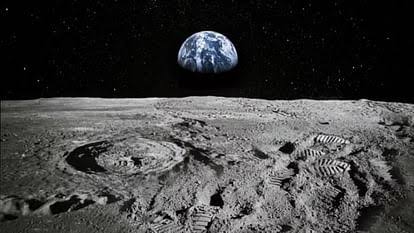Chandrayaan-3’s Pragyan Rover Makes Big Discovery On Chandrama

The data beamed back by the Pragyan rover from Chandrama’s south polar region has now led to the discovery of an ancient crater. This significant find occurred as the Pragyan rover traversed the highland terrain. It is approximately 350 kilometres from the South Pole-Aitken basin. It could offer vital clues about Chandrama’s geological history
India’s Chandrayaan-3 mission continues to make ground breaking discoveries after its successful mission ended on Chandrama in 2023. Pragyan rover discovers ancient 160-km-wide crater on Chandrama.
The Pragyan rover’s findings, including the crater, have excited scientists around the world. The information it gathers from this ancient and heavily cratered region could reshape our understanding of the Moon’s early history, and the formation of its unique terrain.
The data beamed back by the Pragyan rover from Chandrama south polar region has now led to the discovery of an ancient crater.
The Pragyan rover has discovered an ancient, 160-kilometre-wide buried crater near its landing site. The findings have been published in the latest issue of Science Direct by scientists from the Physical Research Laboratory, Ahmedabad.
This significant find occurred as the Pragyan rover traversed the highland terrain at its landing site, approximately 350 kilometers from the South Pole-Aitken basin, the largest and oldest impact basin on the lunar surface.
The crater is believed to have formed before the creation of the South Pole-Aitken basin, making it one of Chandrama’s oldest geological structures. Due to the crater’s age, it was mostly buried by debris from later impacts, particularly from the South Pole-Aitken event, and has been degraded over time.
Images taken by the Pragyan rover’s navigation and optical high-resolution cameras revealed the structure of this ancient crater, offering vital clues about Chandrama’s geological history.
The crater’s discovery provides scientists with a rare opportunity to study deeply buried lunar material that dates back to some of the earliest impacts on Chandrama.
The landing site, rich in material from past impacts, has been a prime location for lunar exploration.
The South Pole-Aitken basin contributed nearly 1,400 meters of debris, while smaller craters and basins added hundreds of meters of material to the landscape. This ancient Regolith, the layer of dust and rock on the Moon’s surface, is crucial for understanding lunar formation and evolution.




